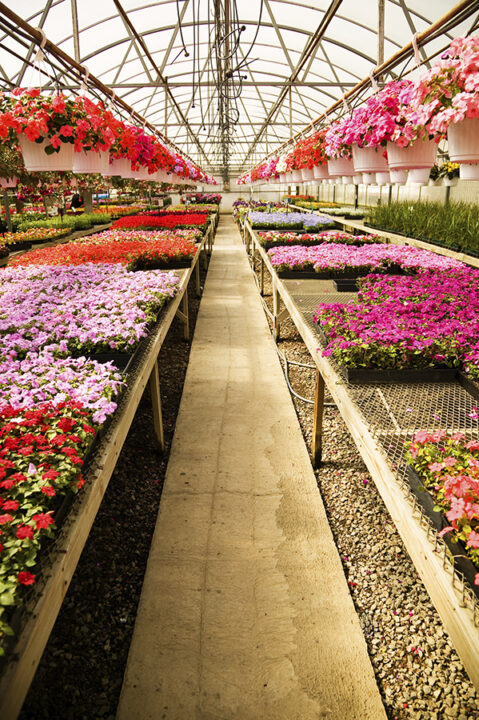Retailer To Grower: The Right Plants Are Hard To Find
 Modern garden centers can give growers the wrong impression about what is most important to them. Walking through a garden center, you can pass home furnishings, clothing, wine or produce before you see your petunias. Despite appearances, however, plants are still the star player for garden retail.
Modern garden centers can give growers the wrong impression about what is most important to them. Walking through a garden center, you can pass home furnishings, clothing, wine or produce before you see your petunias. Despite appearances, however, plants are still the star player for garden retail.
Retailers stock those secondary products in order to meet the needs of their customers. These products extend the number of months their business will interest consumers.
More significantly for growers, retailers have been exposed to a broader array of customer service and product selection by buying from so many vendors. When they then turn to local growers to place orders, some growers don’t look that great in comparison.
Many retailers find that their plant suppliers are more focused on what they want to grow, rather than what the market demands. That leads to an uneven supply chain for retailers’ most important product category.
One Northwest retailer, who wanted to remain anonymous so he could speak more frankly, explained his frustration.
“The way I treat my customers and the way some growers treat me is night and day,” he says.
One example he gives is how passively these growers promote their lines.
“They’ll just send out a list. They just decide what they are going to do. Either you buy it or you don’t,” he says. “They don’t talk to me in particular, which we are doing with our own customers all the time. Consumers’ needs are different than 10 years ago, but you wouldn’t be able to tell that by what plants they’re offering us. There’s still a lot of old-school growers out there.”
This retailer buys from a couple of big growers and 20 to 25 smaller growers.
“Some of them I just stopped buying from because they were unwilling to move along with the way the market is going,“ he says. “Others I stopped buying from because they have limited stock.”
His advice to small and medium growers is to visit key customers to get a sense of what they need and where a smaller grower can fill in the gaps of what larger growers offer.
“It seems to be common sense to be aware of what other growers are growing,” he says. “Bigger guys need to sell to a larger geographic area, so they have to grow things that can do well in multiple markets. That gives an advantage to the small growers, but they don’t do a thing to take advantage of it. They’re growing the same things as the bigger growers. It’s getting scary.”
The way that plays out for this retailer is he finds mass quantities for common annuals, but has a hard time stocking other plants.
“Perennials in bloom are thinner on the ground,” he says.
He adds that a lot of the smaller growers don’t know what the market is doing, or don’t know where the saturation is.
“They cherry-pick what they like, not what will sell at the consumer level.”
But he says he does have success with most of his growers.
“Our relationship has really blossomed. Some of them are on the lookout,” he says. “They’ll say to me, ‘I only have 10 flats of this, do you want them?’ They’re willing to work on a more personal level.”
Custom Orders Help Retailers
The retailer says he likes to place custom orders to ensure he gets what he needs when he needs it.
Custom orders would allow him to not run out stock just when sales are at their hottest.
“Often when something is selling really well, it just disappears,” he says.
A lot of growers do not want to run the risk of second crops, so pre-ordering a second round of common products gives him more leeway to meet his customers’ demands.
He says he believes this is where small to medium growers can thrive. Large growers require a high minimum for custom orders — minimums that are often much too large for a single location store like his.
“I used to consistently do a large pre-order every year with a big grower, but they are shying away from it. They don’t want to keep our stuff separate,” he says. “Another big grower has offered more custom growing, but at a 25-flat minimum per variety. That’s a lot.”
The custom orders he places with some smaller growers are much more diverse and too small per variety to interest a large grower, he says.
“I’ll place an order for 35 plants or 50 plants for a variety. If they can bring in a plug tray of 100, they’ll commit 50 to me and place the rest on the open list. The custom orders are for plants like fuchsias and hardy hibiscus.”
Talk To Your Customers
Chris McKeown of Bloomin’ Garden Centre in the Cincinnati area says one of his main growers, Diefenbacher Greenhouses, values customer input.
Each year it invites all of its key retailers to a day-long meeting to introduce the new plants they will be carrying and brings in experts to explain the strengths of the new introductions. In the course of this, Diefenbacher gets feedback on the highs and lows of its customers’ previous year in plant sales, the trends they spotted and which plants they would like to see more of.
Although there are always unpredictable elements to what sells and doesn’t sell (the demand for basics like boxwood after the winter of 2013 to 2014 comes to mind), on the whole, and retailers know what their customers want and when. It’s the only way they can stay in business.
The Northwest retailer who spoke bluntly about his frustrations with growers whose main communication is sending out the availability list is not alone. This seems to be a common practice for many growers, according to the number of reports I hear from retailers. And like the Northwest retailer, many others have walked away from a grower because that lack of communication leads to a plant list that looks like too many other plant lists.
Luckily, the solution is simple. All growers need to do is talk to their customers. Admittedly, simple in this case is not synonymous with easy.
It’s hard to listen to customers who do not understand how a growing operation works complain about what you have to offer. And making changes based on what you learn will be uncomfortable, because those changes do not come with a guarantee that you’ll be more profitable.
But if you do take those steps, you may be less likely to see customers disappear with no explanations, and also be more likely to have higher sell-through.










